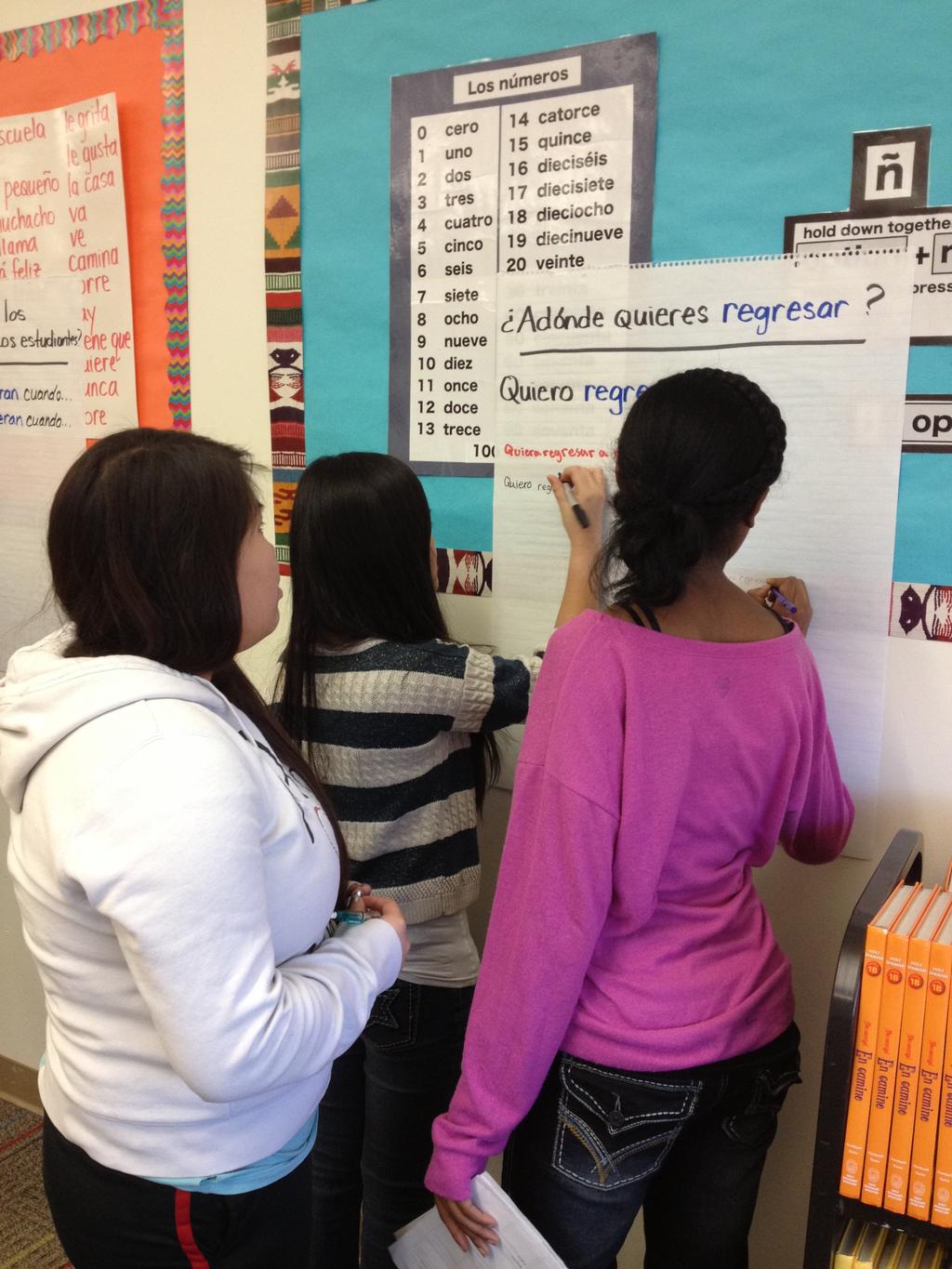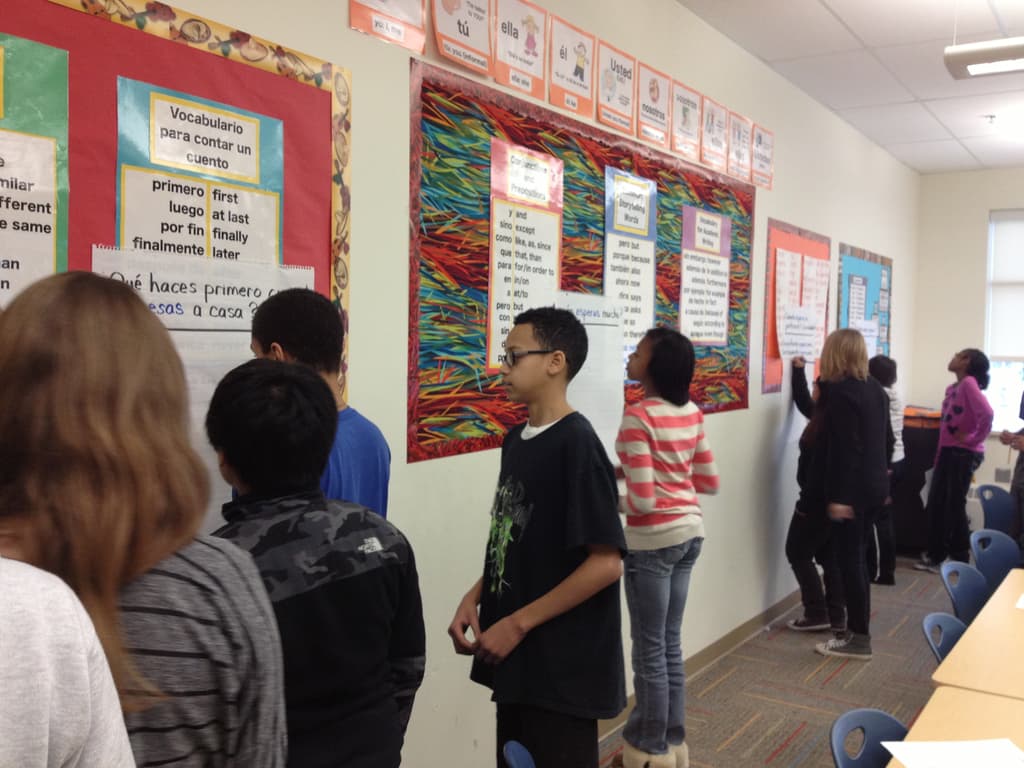We all have those classes that just won't stop talking...and we all have those classes that just won't start talking! Such is the case with one of my second-year classes (level 1B). It's a great group of kids, and they are very good students, but getting them to participate in discussions or speak up in general is worse than pulling teeth! They are silent scholars. This is always a challenge for me when I want to introduce new vocabulary and practice it through PQA, or Personalized Questions and Answers. We rarely end up talking about the students and their lives because, well, no one wants to talk! I have found that the best way to tackle this challenge is to use pre-discussion activities that solicit the information I want, and then I can lead the discussion by asking students about their responses. It helps to have a prop that already contains their answer!
Sometimes, this might be a sketch or drawing that gives a visual response to the question I want to ask. For example, a place to which they have gone allows us practice the structure "went". Another strategy that I use is La Campanada, where students have to respond to a personalized question as bellwork, and then we begin class with a discussion. I can walk around the room and pick up their Campanada papers, read their responses, and use them to start discussion.

Today, we used a third strategy that I like because it gets the students up and moving. I simply wrote each question that I planned to use in the discussion on its own piece of poster paper in different places around the room. I also wrote a sentence starter for each question, so that students' responses were more likely to contain correct language (I say more likely because there are always a few that don't even copy it down correctly!). Students then walk around the room and write down responses--with complete sentences in Spanish--on the poster paper. After 10 minutes or so, when there are a good amount of responses on each poster, I have everyone sit down, and the discussion begins. I will say things like (in Spanish), "Two students want to go to the Philippines. Who do you think they are?" Students guess, and I confirm or deny their guesses. Then, I dig for more information from those students: "Do you want to return there to live or to visit? Do you have family there? When was the last time that you went?", and draw in other students, "Does anyone else have family in the Philippines? Do your parents ever return there to visit them?". The discussions never become free-wheeling, since that's not ever how that class will work, but it does give them the repetitions of the structures that they need, and it personalizes the discussion. Sometimes, I will extend the activity into one that is reading-based by typing up some of the information from the posters. Then, we can discuss the information again at the next class, maybe getting to some questions or responses that we didn't go over on the first day that we spent with the activity.
What strategies do you use to get non-talkative classes talking?





